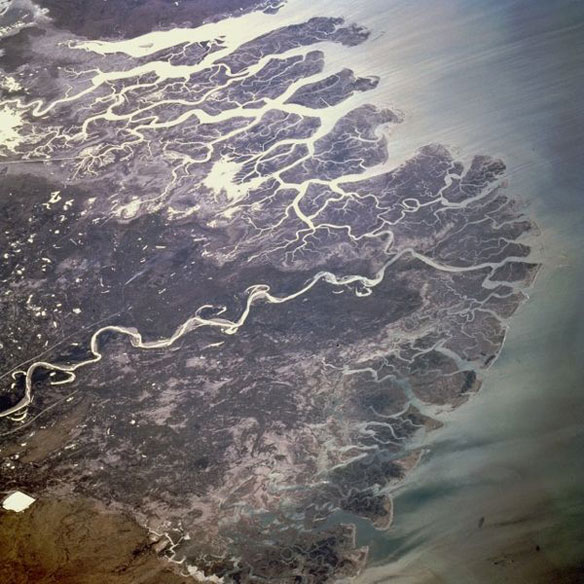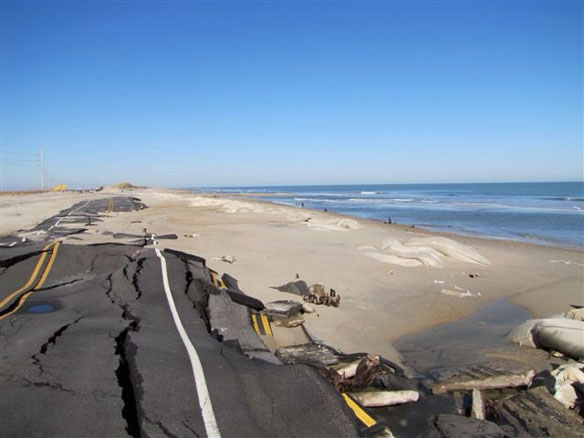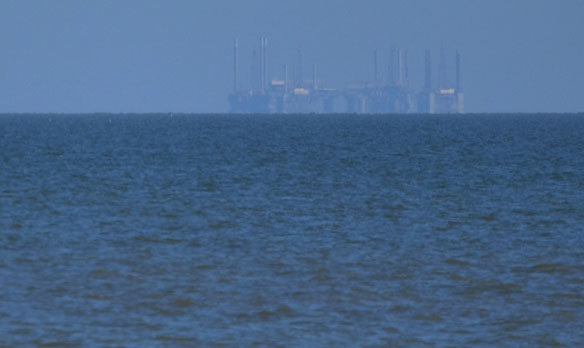New Approach to Measuring Coral Growth

A new more sensitive weight-based approach for monitoring coral growth in the wild has been developed by U.S. Geological Survey researchers leading to more definitive answers about the status of coral reefs.
Iceland Sea in Bloom

The waters off Iceland rank among the world’s most productive fisheries. The reason for the abundance is an ample supply of phytoplankton, the base of the marine food chain. Like any plant, microscopic phytoplankton need sunlight and nutrients to survive. Iceland’s coastal waters offer both during the long days of summer.
Pakistan’s Coast And Encroaching Seas

Encroaching seas are leaving farmland increasingly saline and water-logged, and leading to a decline in fresh water fish stocks. These trends are being studied by the World Wide Fund for Nature Pakistan (WWF-P) which is in the middle of a five-year project to build climate change resistance on Pakistan’s coastline, where communities are vulnerable to cyclones, rising sea levels and storm surges.
Anthropocene Period Would Recognize Humanity’s Impact on Earth

The Anthropocene is the name of a proposed new geological time period that may soon enter the official Geologic Time Scale. The Anthropocene is defined by the human influence on Earth, where we have become a geological force shaping the global landscape and evolution of our planet.
Why Most People Don’t Learn from Natural Disasters

As the population grows, becomes more urbanized and builds infrastructure in hazardous areas like the coast, natural hazards combined with a lack of preparation pose an increasing threat. A panel of experts, recently speaking at a science policy conference of the American Geophysical Union (AGU), called for greater resilience in facing such hazards.
Hurricanes Likely to Get Stronger and More Frequent

Hurricanes are Mother Nature’s largest and most destructive storms. Fed by warm ocean waters and moist atmospheric conditions, about 90 such storms, also known as tropical cyclones, form worldwide each year. With the population of coastal areas growing daily and sea level on the rise, how these monster storms may change as the climate continues to warm is an increasingly urgent question facing climate scientists, insurance companies, and public officials.
Litterati: A Global Digital Landfill of Instagrammed Trash

By combining technology, social awareness and art, the Litterati is tackling this ever-escalating problem one piece of litter at a time. A photographic view of pollution omnipresence.
Crews Work to Seal Leaking Oil and Gas Well off Louisiana Coast

Crews worked Wednesday to seal an old oil and gas well off the Louisiana coast that began leaking during work to plug it permanently.
Smoke Engulfs Strait of Malacca and Singapore: Cause Becomes More Complex

The fire-haze episode straddling the Strait of Malacca in June 2013 has reignited a decades-long debate about responsibility.
